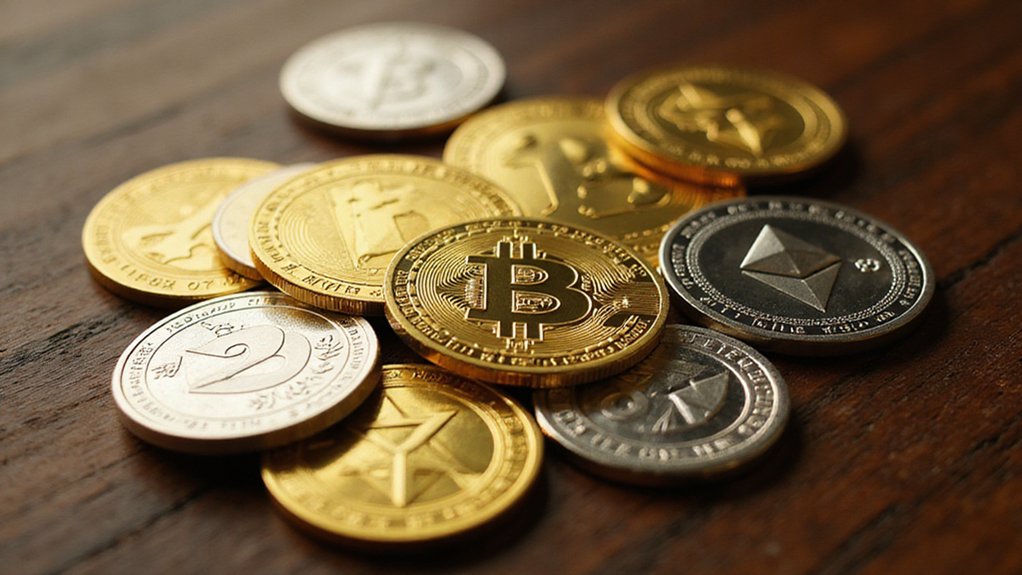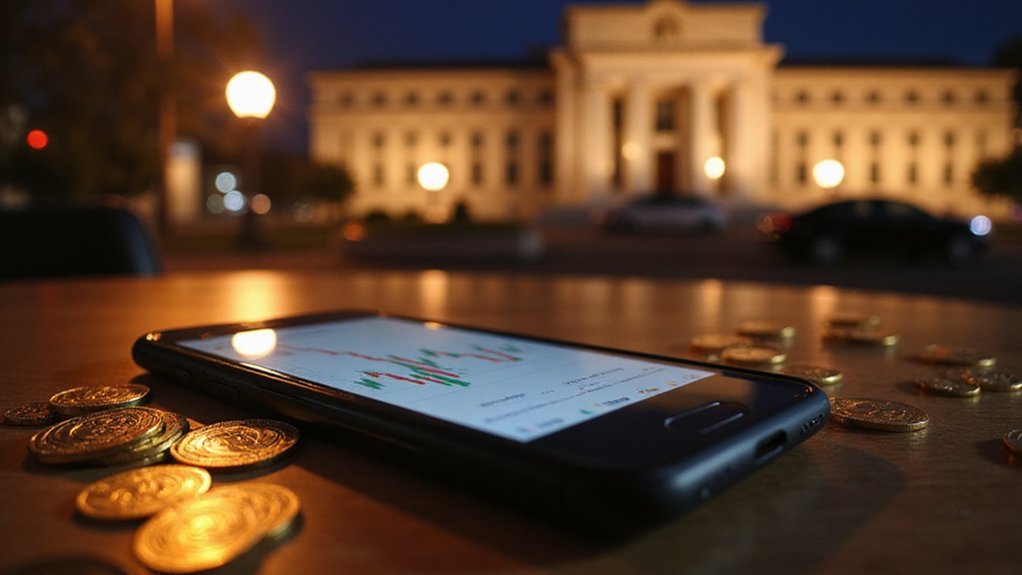Gas fees represent the computational toll blockchain networks extract from users executing transactions or smart contracts—essentially a digital auction where higher bidders receive faster processing. Calculated as gas limit multiplied by base fee plus priority fee, these charges (measured in Gwei on Ethereum) compensate validators while preventing network spam through economic friction. Though designed to maintain operational integrity, gas fees often create the very transactional anxiety cryptocurrency promised to eliminate, revealing blockchain’s inherent tensions between decentralization and affordability.

While most people reflexively wince at the mention of fees in any financial context, gas fees in cryptocurrency occupy a particularly fascinating niche in the digital economy—serving simultaneously as the lifeblood that keeps blockchain networks operational and the source of countless frustrated tweets from users watching their modest transactions carry price tags that would make a Manhattan parking meter blush.
Gas fees represent the computational toll required to conduct transactions or execute smart contracts on blockchain networks, with Ethereum serving as the most notorious example. These charges compensate validators for the processing power and resources expended to secure and validate transactions—a system that transforms every blockchain interaction into a miniature auction where users bid for computational attention.
Gas fees transform every blockchain transaction into a computational auction where users bid against each other for processing priority.
The fee structure operates through a deceptively elegant formula: Gas limit × (Base fee + Priority fee). The gas limit reflects transaction complexity (because apparently even digital money requires bureaucratic classifications), while the base fee adjusts dynamically based on network congestion—rising and falling like a financial tide that somehow always seems to be at high water when you need to make a transaction.
Users can sweeten the deal with priority fees, fundamentally bribing validators for faster processing during peak periods. Blockchain explorers like Etherscan provide real-time visibility into these fee fluctuations by continuously retrieving and organizing network data into accessible formats that help users time their transactions strategically.
Ethereum measures these fees in Gwei, where one Gwei equals 0.000000001 ETH—a denomination so minute it makes fractional reserve banking seem straightforward. This granular pricing allows for precise fee calculations, though the precision feels somewhat academic when watching fees fluctuate more wildly than a day trader’s portfolio during market volatility.
Beyond mere transaction costs, gas fees serve important economic functions. They prevent network spam by attaching meaningful costs to frivolous operations, regulate blockchain usage by balancing demand against limited validator capacity, and provide financial incentives that keep validators processing transactions rather than pursuing more conventional employment opportunities. After Ethereum’s transition to proof-of-stake, a portion of these fees now rewards ETH stakers who help secure the network through their token holdings.
The irony remains that while cryptocurrency promised to eliminate traditional banking friction, gas fees have created their own category of transactional anxiety—one where users routinely calculate whether purchasing a digital collectible justifies paying fees that exceed many people’s hourly wages. The Ethereum Virtual Machine serves as the computational backbone that executes these fee-generating transactions across countless decentralized applications built on its infrastructure.
Network upgrades continue attempting to address these concerns, though the fundamental tension between decentralization, security, and affordability persists with stubborn mathematical certainty.
Frequently Asked Questions
Can I Get a Refund if My Cryptocurrency Transaction Fails Due to Insufficient Gas?
Unfortunately, cryptocurrency transactions that fail due to insufficient gas offer no refunds—miners have already expended computational effort processing the incomplete transaction, and the network compensates them accordingly.
This non-refundable policy prevents spam attacks while creating an amusing paradox: users pay for the privilege of watching their transactions fail spectacularly.
Wallets typically warn against inadequate gas limits, though such warnings apparently carry all the persuasive power of fine print disclaimers.
Do All Cryptocurrencies Use Gas Fees or Only Specific Blockchain Networks?
Gas fees remain exclusive to specific blockchain architectures, primarily Ethereum and its EVM-compatible derivatives like Binance Smart Chain and Polygon.
Bitcoin employs transaction fees based on data size rather than computational units, while networks like Nano operate entirely feeless through block-lattice architecture.
Ripple charges minimal anti-spam fees, and Solana maintains microscopic gas costs (~$0.00025).
The fee structure reflects each network’s consensus mechanism and computational requirements—a fascinating study in economic incentive design.
What Happens to My Transaction if I Set the Gas Fee Too Low?
When users set gas fees too low, their transactions face an unforgiving reality: miners simply ignore them, prioritizing higher-paying alternatives instead.
These underfunded transactions languish indefinitely in the mempool—a digital purgatory where hope slowly dies. During network congestion, they’re particularly doomed.
Even failed attempts consume gas (because miners still expended computational effort), meaning users lose money while accomplishing nothing.
It’s capitalism at its most ruthlessly efficient.
Are Gas Fees Tax-Deductible When Filing Cryptocurrency Tax Returns?
Gas fee deductibility hinges on transaction purpose—personal crypto investments typically preclude direct deductions, though fees adjust cost basis for capital gains calculations.
Business-related crypto activities may qualify fees as deductible expenses. Each gas payment potentially triggers taxable events requiring Form 8949 reporting.
The IRS’s conspicuous silence on explicit guidance leaves practitioners steering through murky waters, making conservative treatment advisable until clearer regulatory frameworks emerge from bureaucratic deliberations.
How Do Gas Fees During Network Congestion Compare to Normal Trading Periods?
Gas fees during network congestion exhibit dramatic volatility compared to normal periods, often surging 100x above baseline levels.
While Ethereum’s typical fees hover below 100 gwei during calm trading, congestion pushes them beyond 1000 gwei—transforming routine transactions into expensive propositions.
This creates a perverse auction where users bid increasingly higher amounts for block inclusion, effectively pricing out smaller transactions and driving adoption of layer-2 solutions.









